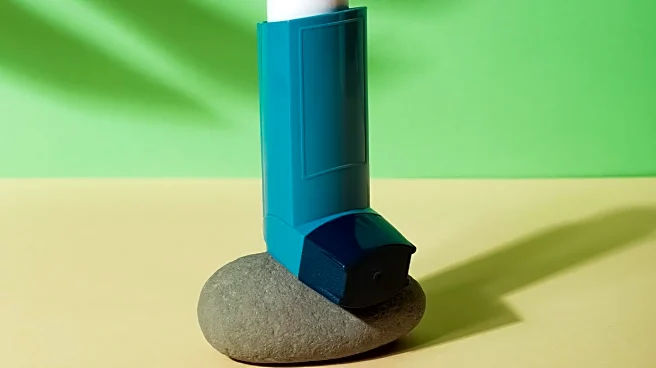What's Happening?
Sleep experts have identified the ideal room temperature for optimal sleep quality, suggesting a range between 65-67 degrees Fahrenheit. According to Dr. Chris Winter, a neurologist and sleep medicine specialist, maintaining this temperature helps align with the body's natural cooling process, which begins two hours before sleep. Shelby Harris, PsyD, Director of Sleep Health at Sleepopolis, emphasizes that extreme temperatures can disrupt sleep and aggravate insomnia symptoms. The study highlights that 57% of U.S. adults occasionally experience being too hot while sleeping, while 37% report being too cold. The experts recommend lifestyle changes such as reducing screen time, avoiding caffeine and alcohol before bed, and creating a dark, quiet, and cool sleep environment to improve sleep quality.
Why It's Important?
The findings underscore the significant impact of room temperature on sleep quality and overall health. Proper temperature regulation can prevent fragmented sleep and enhance restorative sleep cycles, including REM sleep. This has broader implications for public health, as poor sleep quality is linked to various health issues, including cognitive decline and weakened immune function. By adopting recommended practices, individuals can potentially improve their sleep quality, leading to better health outcomes and increased productivity. The advice also highlights the importance of environmental factors in sleep hygiene, which can be crucial for those suffering from sleep disorders.
What's Next?
Individuals are encouraged to implement the recommended temperature settings and lifestyle changes to enhance their sleep quality. Sleep experts may continue to research and provide guidance on other environmental factors affecting sleep. Additionally, the sleep industry might see increased demand for products like cooling pillows and breathable bedding, as consumers seek solutions to optimize their sleep environment. Public health campaigns could also focus on educating the public about the importance of sleep hygiene and its impact on overall health.
Beyond the Headlines
The emphasis on room temperature for sleep quality highlights the intersection of environmental science and health. It raises awareness about the role of circadian rhythms in sleep and how modern lifestyle factors, such as technology use, can disrupt these natural processes. This could lead to broader discussions on how urban living and climate change might affect sleep patterns and health. Furthermore, the advice to maintain a cool environment aligns with energy conservation efforts, as individuals may adjust their thermostat settings to achieve optimal sleep conditions.










